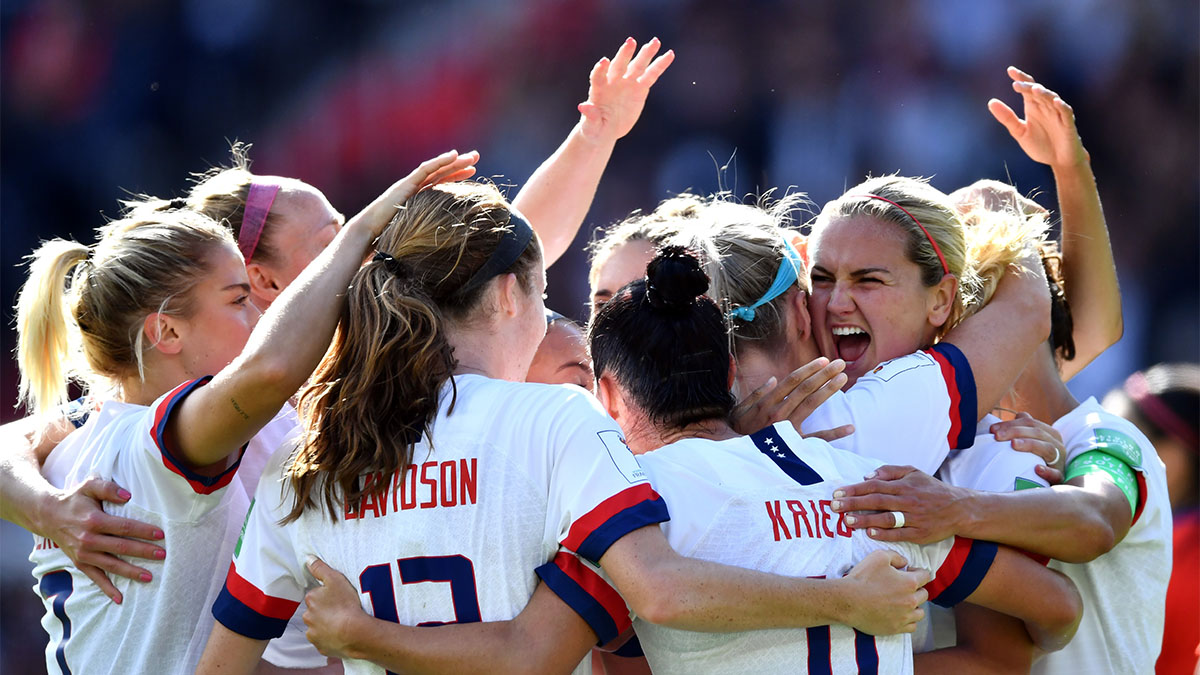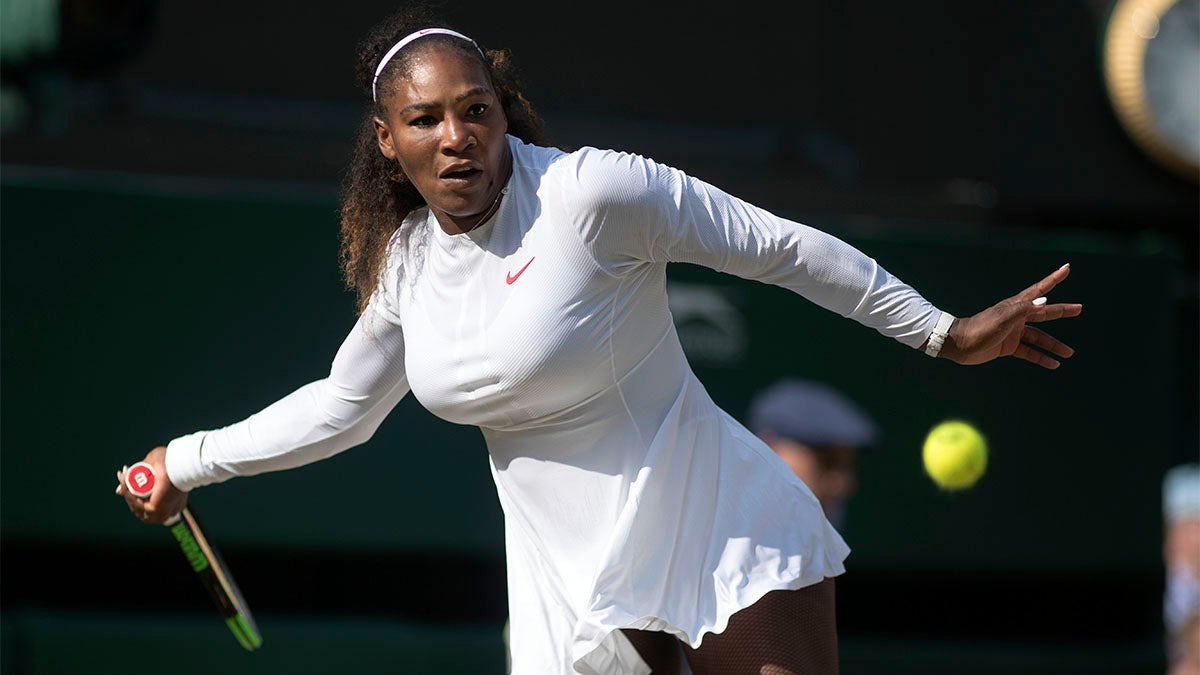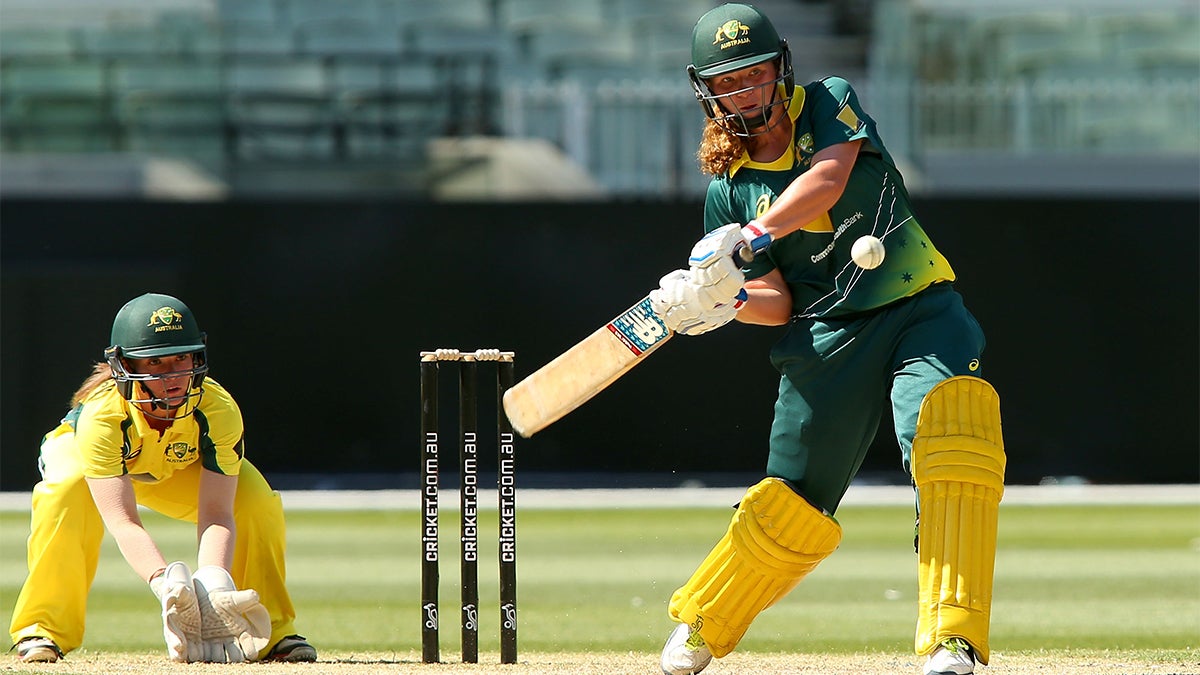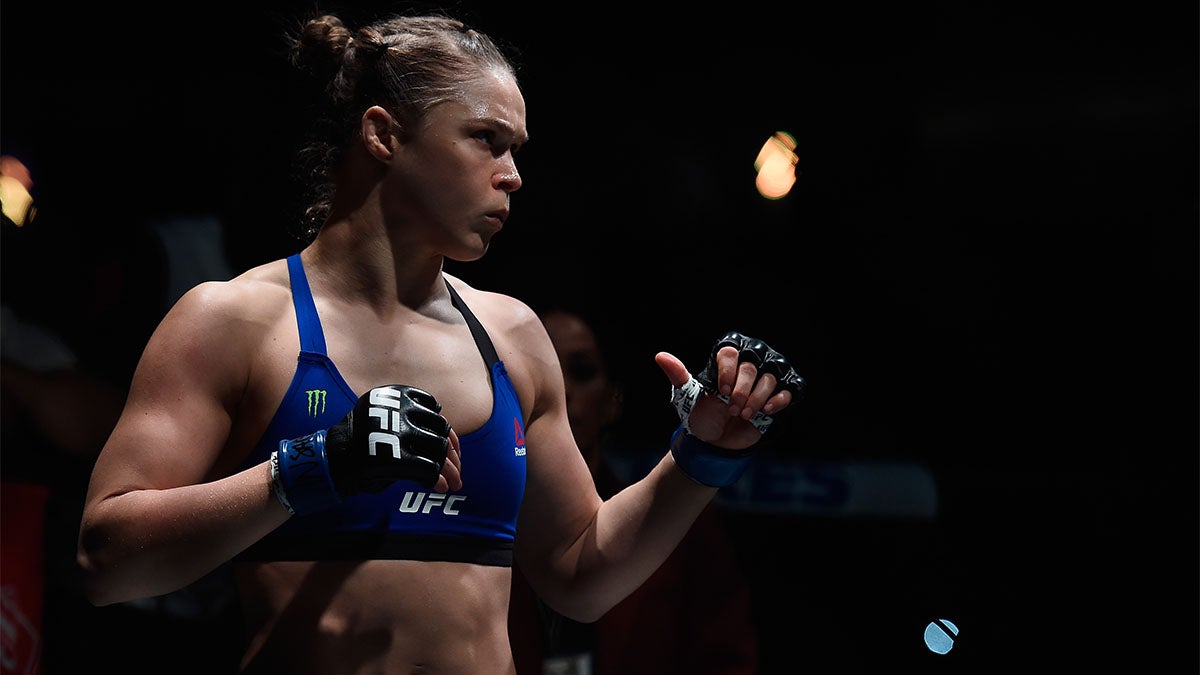Want to earn equal prize money? Play Grand Slam tennis
 The Women’s World Cup was barely over, the confetti still in the air, when fans took up the chant “Equal pay!” throughout the stadium. The chant was in support of calls to pay the U.S. women’s soccer team the same as the men’s team. The women’s team — while being vastly more successful having won the tournament four times — earned less in salary and bonuses than the men’s team, which has never advanced out of the quarterfinals of the tournament.
The Women’s World Cup was barely over, the confetti still in the air, when fans took up the chant “Equal pay!” throughout the stadium. The chant was in support of calls to pay the U.S. women’s soccer team the same as the men’s team. The women’s team — while being vastly more successful having won the tournament four times — earned less in salary and bonuses than the men’s team, which has never advanced out of the quarterfinals of the tournament.

GlobalSport Matters examined sports with similar events for male and female competitors — tennis, soccer, golf, cricket and UFC — to see how does the pay for comparable sports measure up.
Soccer
Long before the U.S. women hoisted the championship trophy at the Women’s World Cup in France in July, the team filed a class-action lawsuit against the U.S. Soccer Federation, arguing that even though they have been world champions, they are paid less than the men’s team and are provided less financial support.
Mediation discussions broke down on Aug. 16 between the team and the federation. No new talks are scheduled.
According to the Washington Post, the women’s team contributed close to or more than half of U.S. Soccer’s revenue from games since the 2016 fiscal year. To be exact, between the years of 2016-2018 the women’s team has made $900,000 more than their male counterparts.
U.S. Soccer Federation president Carlos Cordeiro responded recently with a statement that included a fact-check sheet showing the women were paid far more than the men were in the past decade.
According to Yahoo.com, Cordeiro mentioned that in the past decade the women were paid $34.1 million in salary and bonuses compared to the men, who were paid $26.4 million. That prompted a response from the U.S. men’s national team, which called out the weaknesses of Cordeiro’s statement and charged him and the U.S. federation of focusing on profits instead of the growth of the sport.

“To the extent of the degree of revenue generation influences any pay increases, the two sides will need to find common ground on how that topic is empirically measured,” University of New Hampshire law professor Michael McCann said to Washington Post.
After filing the lawsuit and presenting their argument, the USWNT caught the attention of U.S. Sen. Joe Manchin. The West Virginia Democrat proposed a bill that would prohibit the use of federal funds for the organization of the 2026 World Cup, which is scheduled to be co-hosted by the United States, unless U.S. Soccer agrees to equitable pay for both the women’s and men’s national teams.
“I’m glad the U.S. women’s soccer team’s latest victory is causing public outcry,” Manchin said. “I’m encouraging everyone to call their senators and representatives to help us get this bill passed and finally pay the equitable pay they deserve.”
Manchin was motivated from the letter he received from Nikki Izzo-Brown, the head women's soccer coach at West Virginia.
“Working as the Women’s Soccer Coach at West Virginia University for over twenty four years and earning 17 Conference Championships, 20 NCAA appearances, and producing 25 professional players, I believe it is wrong for the U.S. Soccer women to be valued less for their work because of gender,” Izzo-Brown said in her letter.
Both national soccer teams are paid under separate bargaining agreements. Some of the women on the USWNT receive salary from the National Women’s Soccer League.
The bill will focus more on payments that relate to bonus structures set up for when the teams advance in their respective World Cups.
According to an article written by Joe Petricone of Business Insider, the pot for the World Cup champions for women is around $30 million compared to their male counterparts, $400 million.
Golf
Prize money continues to rise on the LPGA Tour, but women’s tours in other parts of the world have been struggling. Despite the LPGA Tour purse increases, women lag far behind their male counterparts.
Tournament organizers from the Royal & Ancient Golf Club of St. Andrews increased the prize fund for the Women’s British Open to $4.5 million dollars, which is a 40% increase from 2018. According to ESPN, the winner of the event made $490,000 last year; this year’s winner won $670,000.
“We recognized that more needed to be done to elevate the prize fund for this great championship and are pleased that we have been able to make a significant increase this year,” chief executive of the R&A, Martin Slumbers said to ESPN.
Though the increase is significant, it pales in comparison to what the men earn. Shane Lowry, who won The Open at Portrush in Northern Ireland in 2019, earned $1.935 million, meaning Hinako Shibuno, the women’s winner, received less than a third of Lowry.
The Royal & Ancient Golf of St. Andrews organizers are encouraged they are heading in the right direction when it comes to equal pay.
“This is an important first step and we know it will take time to move closer to achieving parity with the men’s game,” Slumbers said.
Tennis
Grand Slam events have begun to close the pay gap that Billie Jean King first brought attention to more than four decades ago.
After King threatened a protest of the 1973 US Open, the United States Tennis Association made immediate changes, according to ESPN. The winners that year, John Newcombe and Margaret Court each took home $25,000 out of the total pot of over $135,000 for all participants. Just five years prior, men’s prize winnings was twice as much as the women’s.
The Australian Open had an equal pay policy implemented during the early years of the Open era, even paying women tennis players more at one point. However, purses fluctuated and by the mid 1990s men were earning more than women according to ESPN. The Women’s Tennis Association worked behind the scenes and reached an agreement with tournament officials prior to the 2001 Australian Open.
“It’s great that the Australian Open has gone back to equal prize money,” 2000 Australian Open champion Lindsay Davenport said. “Women’s tennis has certainly proven that it is worth it.”
According to ESPN, in 1978 there was a 583.3% difference in Australian Open prize money as the men’s winner earned $151,500 and the women’s winner earned $22,200. That pales in comparison to the Australian Open’s 2019 payouts: $4.1 million AUD each for Naomi Osaka and Novak Djokovic.

The French Tennis Federation decided in 2006 to offer equal prize money for the French Open. One of the biggest advocates for the change was Amelie Mauresmo. She was motivated to speak out for the change after she was given an equal prize money at the Australian Open, but less than the male champion when she won Wimbledon in the same year.
“As a Frenchwoman, I’m happy and proud of the French Open organizers,” Mauresmo said to ESPN.
When French Open officials decided to make the change, the combined champions prize money was $1.5 million. According to the World Tennis Association website, winners for both men and women now receive $2.62 million.
When Wimbledon instituted its equal prize money standard in 2007, the decision was deemed more symbolic than a gesture of fairness. The year prior, the difference in prize money earned by Mauresmo and Roger Federer was five percent. However thanks to the pressure by Venus Williams, Wimbledon made the change, according to ESPN.
“When your eyes are closed, you really can’t tell, next to you, who’s a man and who’s a woman,” Williams recalled in a USA Today article. “(I asked them) to think about their daughters and their wives and sisters. How would you like them to be treated?”
Wimbledon officials one-upped the French when they implemented another key reform: equal prize money for each round instead of just the winners. French Open officials matched the move a month later, according to ESPN.
Though the tennis elite can earn big paychecks, players on the lower levels battle severe inequities and barely make enough to live.
In 2013, The International Tennis Federation conducted a study that determined out of the 14,000 nominally professional tennis players, 6,000, including many juniors, did not make a profit. Through their regimented schedules and overall costs, they struggle to maintain their status, according to an article at the New York Times.
“That’s quite astonishing for a sport that has almost $300 million in prize money,” ITF Senior Executive Director Kris Dent said. “These smaller tournaments have no TV, no sponsorships and no one paying any money to go see them, and probably never will.
Cricket
In India, professional cricket is facing one of the larger gender pay gaps in the world. According to BBC News, some of the top men in the sport earn an average of more than $1.07 million dollars; the top woman in cricket makes about $76,950.

Though some believe the men’s leagues brings in more revenue for the Board of Control for Cricket in India, others believe this shouldn’t be the only reason for the massive difference and pay should be reflective on skills.
“We’ve really struggled to get where we are,” said Mithali Raj, captain of India’s national women’s team to BBC. “There were times when I played with one bat the whole season.”
UFC
UFC owner Dana White famously claimed in 2011 that women would never compete in his organization.
One year later, White signed his first woman to UFC in Olympian Ronda Rousey after seeing the success of women fighting for smaller organizations such as Strike Force and Bellator MMA.
“They’re really good,” White told MMAfighting.com, “ I completely own up to saying women would never fight in the Octagon.”
Rousey’s signing led to the creation of the women’s division, which debuted at UFC 157 in early 2013: Rousey faced Liz Carmouche in the main event for the Women’s Bantamweight title.

“The reason that the women’s MMA has taken off and it’s so big because these women are legit,” White said. “Really good, very technical, and it’s amazing and I never saw it coming.”
During her three-year title reign, Rousey was a strong advocate for fairness through marketability. At the UFC 193 press conference in 2015, she was adamant.
“How much you get paid should have something to do with how much money you bring in,” Rousey said.
According to MMAfighting.com, the UFC is one of the organizations where equality isn’t an exception, but the everyday norm.
“If you think about in all other sports what they talk about is if women play golf, there’s always some excuse about women playing a sport,” White said. “It’s absolutely an even playing field in the UFC.”
Women in the UFC are on the same level as men when it comes to how they get paid per fight; what they are able to bring in through relevancy and marketability. As the co-main event of the night in UFC 232, Cris Cyborg earned $500,000, making her the highest paid fighter of the night. The woman who beat her, Amanda Nunes, was the second-highest paid fighter at $350,000, according to MMAfighting.com
Though as an organization, the UFC continues to work toward equality, White plans to make certain women will be rightfully paid.
“Obviously, whatever sport it is and the women are bringing in the money, yeah, they should get paid,” White said.
Corey Kirk is a masters’s sports journalism student at Arizona State University
Related Articles
After talks break down, Rapinoe says USWNT 'always open' to equal pay ideas
USWNT, U.S. Soccer agree to mediation over World Cup pay
Donations aim to eliminate U.S. soccer pay differences
Opinion: USWNT discrimination lawsuit underscores importance of Title IX
U.S. women’s soccer team sues governing body over gender discrimination

